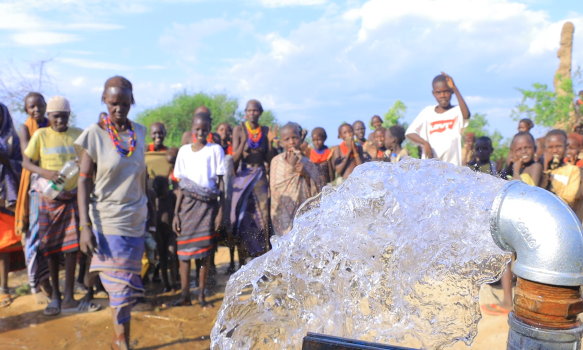Whenever he is asked to name his top three priorities for Ethiopia’s lowland regions, the president of the Afar Regional State of Ethiopia, H.E. Awol Arba, never hesitates.
“The first priority is water, the second priority is water, the third priority is water,” he asserts.
As of 2020, only 40 percent of Ethiopia’s rural population had access to uncontaminated water within a 15-minute walk. These basic water services are even scarcer in the arid lowland communities of Afar and other regions along the periphery of the country’s eastern, western, and southern borders. Water scarcity affects every aspect of life in the agro-pastoralist, ethnically diverse communities of the lowlands, from livestock management to human health and nutrition.
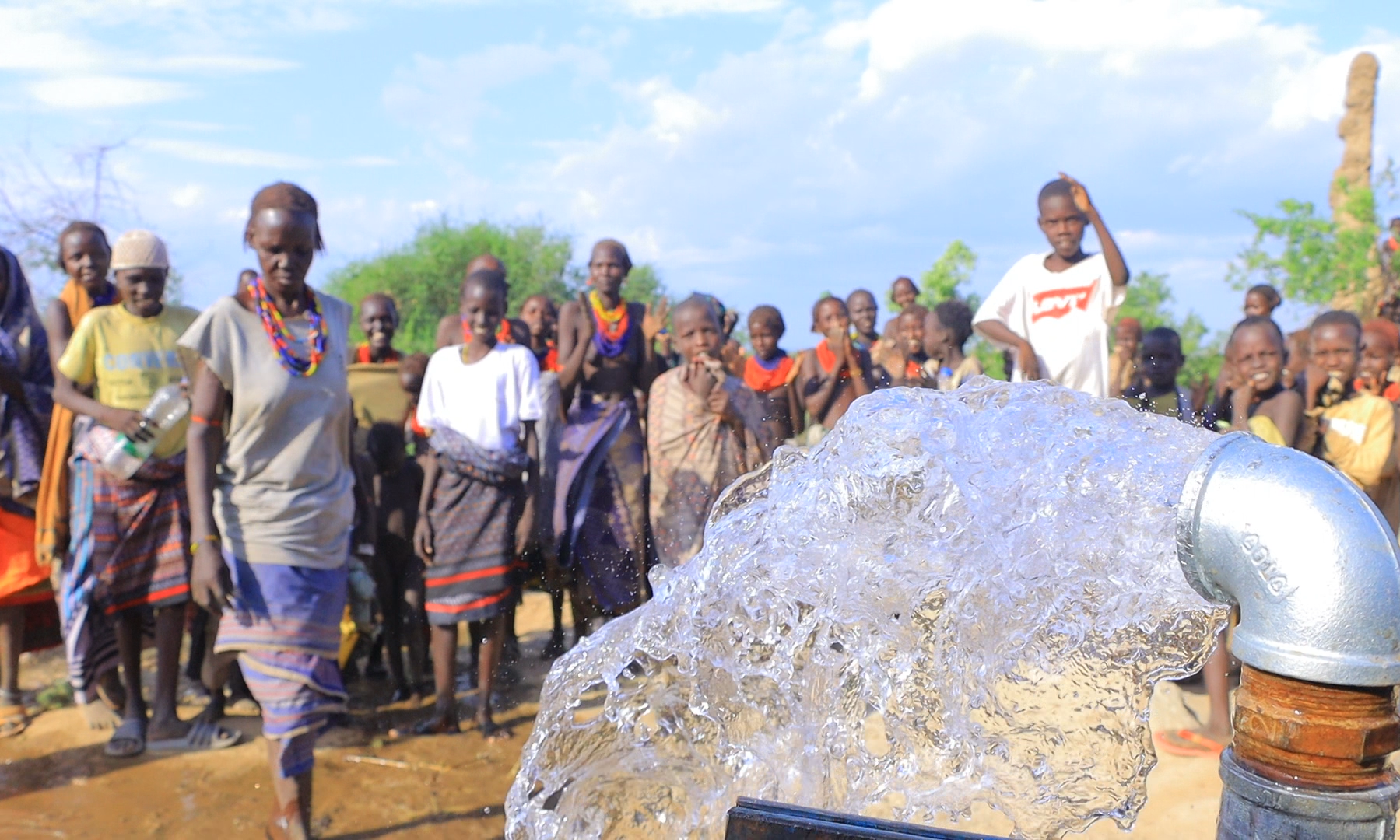
Photo credit: USAID Climate-Resilient WASH Activity
Whenever he is asked to name his top three priorities for Ethiopia’s lowland regions, the president of the Afar Regional State of Ethiopia, H.E. Awol Arba, never hesitates.
“The first priority is water, the second priority is water, the third priority is water,” he asserts.
As of 2020, only 40 percent of Ethiopia’s rural population had access to uncontaminated water within a 15-minute walk. These basic water services are even scarcer in the arid lowland communities of Afar and other regions along the periphery of the country’s eastern, western, and southern borders. Water scarcity affects every aspect of life in the agro-pastoralist, ethnically diverse communities of the lowlands, from livestock management to human health and nutrition.
That is why in the early 2010s USAID began investing in Ethiopia’s underserved lowlands—when few others were doing so. USAID has invested in water not only as a basic necessity, but also as an entry point to improve the health, well-being, and livelihoods of lowlands communities. “Every dollar spent on WASH [water, sanitation and hygiene] has a $7 ripple effect benefit—less waterborne disease, less missed school or work,” explains Faisal Hashi, Water Security, Sanitation and Hygiene Advisor, USAID Ethiopia.
Tackling entrenched challenges such as chronic droughts, conflict and instability, and underinvestment in the region requires the kind of long-term commitment that USAID has made for more than a decade, says Petros Aklil, an advisor to the Climate-Resilient WASH (CR-WASH) activity and former Chief of Party of the USAID Lowland WASH activity. “Since the gaps and the challenges are vast, it has been critical to have sustained support.”
With a focus on improving data for decision-making, professionalizing water service delivery, empowering women to take on more leadership roles within the sector, and increasing resilience to recurrent droughts, USAID’s sustained investments in water, sanitation, and hygiene in the lowland regions of Ethiopia have transformed the livelihoods of millions.
Enhancing Data for Improved Services
Expanding available data to improve decision-making has been a key feature of USAID’s investments in water in the lowlands over the past decade. Given how deep groundwater can be throughout this region—up to 600 feet—and how remote communities can be from each other and from local government water offices, data has played an important role in reducing costs and enhancing local support and oversight.
For instance, USAID and the Government of Ethiopia worked with the U.S. Geological Survey (USGS) to reduce uncertainties around water availability through an initiative to map groundwater in parts of the Somali region. In these areas, drilling boreholes can be expensive and time-consuming because of uncertainties about water availability and quality. With USGS maps in hand, USAID increased its drilling success rate to 90 percent from 50 percent in a small, mapped subset of the Somali region and was able to deploy project resources more effectively. Maps and training were then provided to staff at the Ministry of Water, Irrigation, and Electricity to ensure government-funded borehole-siting benefited from the new data and, importantly, could be scaled through broader mapping efforts.
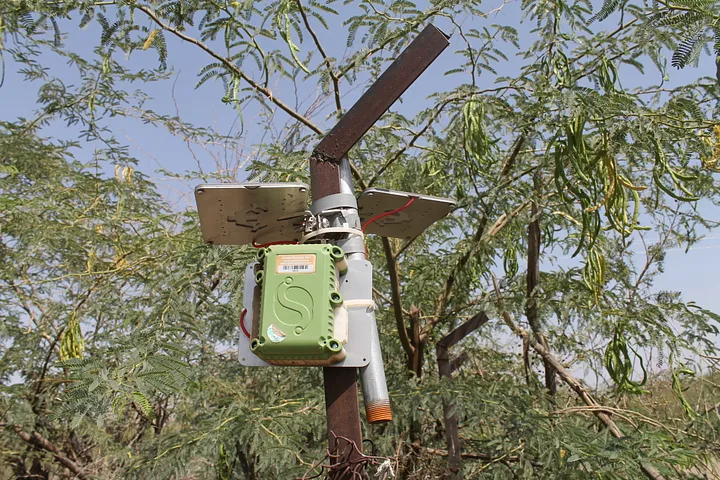
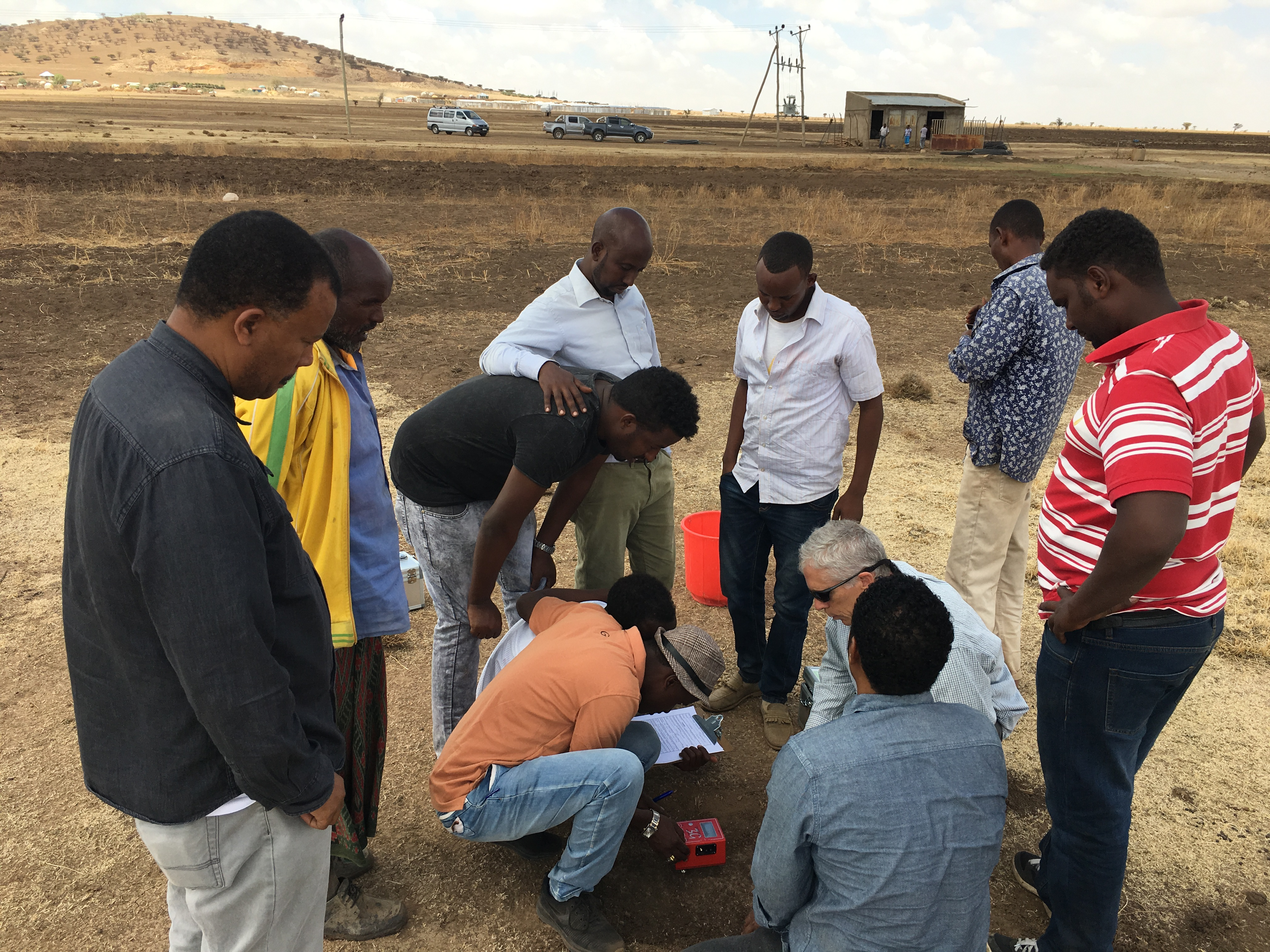
Data solutions also supported local operations and maintenance (O&M) systems. A 2013 UNICEF report indicated that 30 percent of the boreholes in Afar were not functioning due to a lack of effective O&M. To tackle this challenge, USAID worked with local authorities and Sweet Sense, a small U.S. business, to install 270 remote sensors on motorized boreholes in Afar and Somali. These sensors monitor water system functionality and transmit a daily flow of data via cell phone or satellite to a cloud-based data visualization platform connected to the regional water bureaus’ information management systems.
To support the remote sensors’ successful integration, USAID trained regional government partners to use the asset management system for more efficient planning and deployment of O&M resources. Today, real-time data from the sensors enable the regional water bureaus to identify and prioritize O&M needs and assign repairs to O&M crews; however, signal outages, sensor maintenance, and the need to build capacity to encourage new updates to the system remain challenges.
Enhancing Capacity to Sustain Access to Safe Water
Improving the enabling environment and professionalizing the management of water services has also been a longstanding feature of USAID’s work in the lowlands. This work started at the very top, with USAID supporting a review of the National Water Policy and the creation of the first national standard for rural water design and implementation. Over the last decade, USAID contributed to 20 national policies related to water and sanitation that benefited communities throughout the lowlands.
With community-based management enshrined in national policy for service delivery in rural areas, USAID has focused on revitalizing and professionalizing village-based water and sanitation committees (WASHCOs) to enable self-reliance and sustainability. Once revitalized, USAID works with WASHCOs to establish or strengthen their financial systems. In particular, USAID has helped WASHCOs systematize the collection of user fees, open savings accounts, and in some cases, set up mobile payment systems. Now 95 percent of water schemes supported by USAID are collecting fees to cover recurrent O&M costs.
USAID has also focused on strengthening the capacities of WASHCOs to manage minor O&M, including conducting basic maintenance on the system and connecting WASHCOs with technicians when repairs are beyond their skills. “When maintenance was beyond their capacity, WASHCOs didn’t know where to go or how to access those types of services,” Aklil explains. “USAID supported creating those linkages.”
With USAID as an ally and advocate, these community organizations are better equipped to interface with government officials and private companies for more complicated system repairs. Now an O&M technician equipped with a motorcycle and a mobile phone is available on call in some areas to provide basic maintenance for a fee.
Empowering Women to Lead
The empowerment of women and girls is a core operating principle for USAID’s water security programming. In Ethiopia, USAID recognized how women in the lowlands bear the burden of collecting water but traditionally have had little say in how their communities manage water.
Before USAID rehabilitated water points in her community, WASHCO member Dobi Oyita recalls, “I would have to go really far to get water for my family to drink. At the dry river bed, I would have to dig a hole, dig deep to get water. Then, I had to load the water on my back and walk for hours to get home.”
That is beginning to change as women, like Oyita, take on leadership roles in their community WASHCOs. USAID’s deliberate approach to training women as technicians and managers—roles typically reserved for men—has helped. Through women-only training sessions, women-led training, and locating the training in communities, USAID has made it more comfortable and easier for women to attend and thereby lowered key barriers to entry for women in the sector.
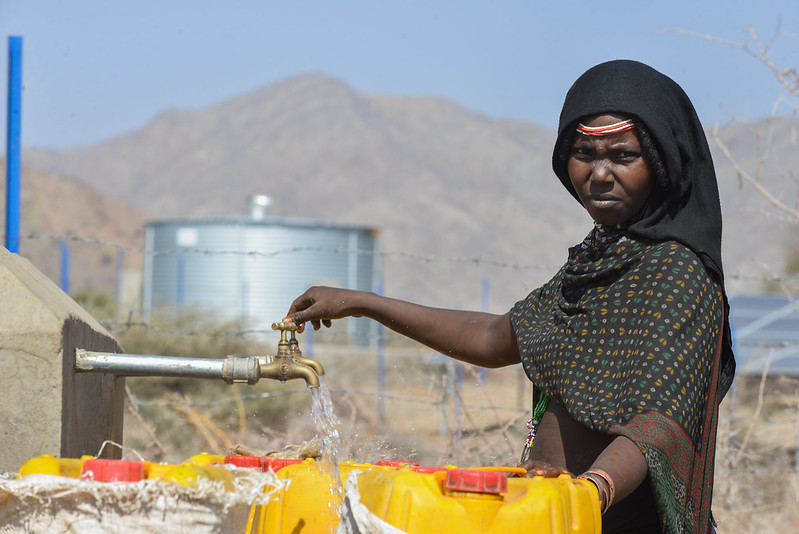
The aim, says Mohamed Abdinoor, Chief of Party, USAID CR-WASH activity, is to promote “not participation alone, but women playing an active role in terms of the financial management and decision-making processes.”
Building Resilience to Cope with Recurring Disasters
The lowlands’ geography, along with pastoralists’ reliance on natural rangeland for their livelihoods, make them particularly vulnerable to the effects of severe weather, including prolonged droughts and increased flash flooding. Extreme weather events and conflicts over scarce resources place water at the intersection of humanitarian relief and development in the region. In such fragile contexts, USAID strives to implement approaches that advance development objectives, while also building resilience to recurrent humanitarian emergencies.
USAID is collaborating with government partners on water safety plans to help mitigate the effects of severe weather and designing water supply interventions with future humanitarian needs in mind. “If there is a water supply system with a high yield, we design that supply system to address the needs of the community plus other communities in situations where there are humanitarian needs,” explains Hashi.
USAID has also experimented with different funding approaches to be more flexible. To respond to the adverse effects of the 2015 El Niño, USAID blended development and humanitarian funding within the same award. In 2022, USAID focused on modifying development activities to support water point rehabilitation in areas severely affected by La Niña–induced droughts. Currently, USAID has included a “crisis modifier” clause in the CR-WASH contract that allows the activity to rapidly redeploy funds to meet emergency needs when humanitarian crises arise.
Investing in water services in lowland communities has bolstered resilience. Access to water reduces the need for pastoralists to move about in search of water and pasture for livestock and saves time that can be spent attending school, cultivating gardens, accessing loans, and creating microenterprises, explains Abdinoor. “So, the idea is that by diversifying economic opportunities, if there’s a drought, you then have different income streams,” he says.
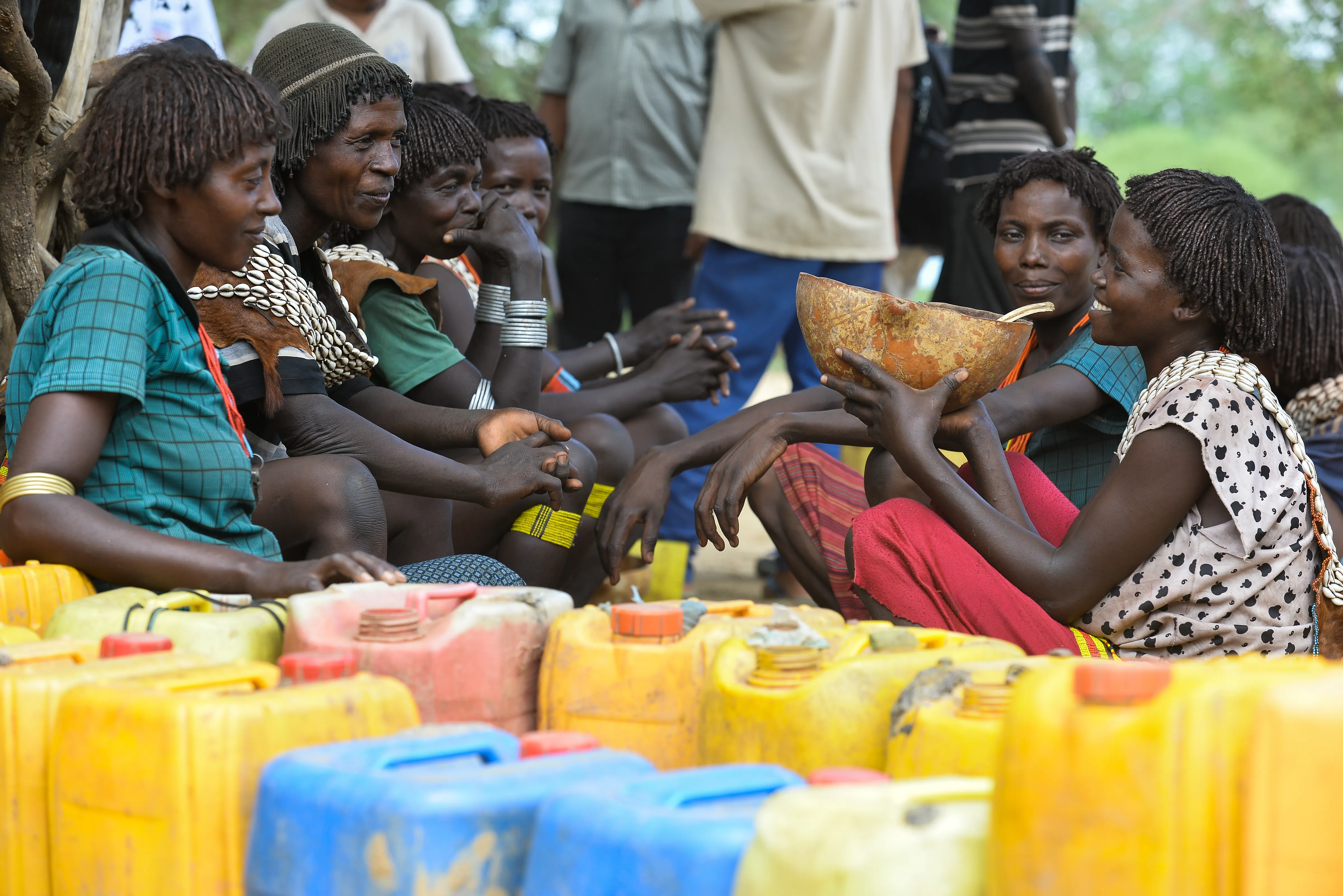
Collaborating, Learning, and Adapting: The Benefits of Sustained Investment
From the beginning of the Agency’s partnership with regional governments and communities, USAID staff recognized the need to experiment, learn, and apply lessons in a challenging environment. Aklil emphasizes that USAID’s sustained investment has made this possible.
“One of the advantages of the USAID investment in the lowland areas is that we captured our learning at the different stages of each project,” he says, “and we used those to advocate and to influence national government policies and strategies for the lowland communities.”
Engaging local partners at every stage and listening to their ideas and concerns promoted inclusion and ownership of interventions that might have otherwise been perceived as disruptive to seminomadic communities. Those experiences also helped USAID advocate for policies that better align with lowland residents’ needs.
USAID’s ongoing investments have delivered improved water and sanitation services to over 1 million people, significantly reducing the humanitarian burden in regions affected by recurring droughts. By the end of 2028, USAID aims to deliver safe drinking water to 825,000 people in Ethiopia’s lowland region. Achieving this goal depends on USAID and its partners’ continued commitment to enhancing data utilization, strengthening water and sanitation institutions, promoting women’s leadership, and fostering community resilience amidst conflict and fragility. Together with the Government of Ethiopia and other key stakeholders, USAID is dedicated to expanding water and sanitation services in the region.
Related Resources
- Senator Paul Simon Water for the World Act of 2014
- Celebrating 10 Years of the Water for the World Act
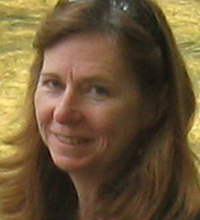
About The Author
Kathleen Shears, MS, is a science writer and communications specialist who works with the Research Utilization team at FHI 360 to translate public health research findings into evidence-based policies and practices. Before joining FHI 360, Kathleen served as a communications manager for global projects advancing child survival and infectious disease prevention. She was also a congressional aide specializing in health and education issues and a newspaper reporter. Kathleen has a master’s degree in journalism from the University of North Carolina at Chapel Hill.

